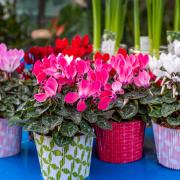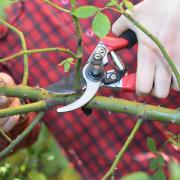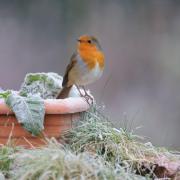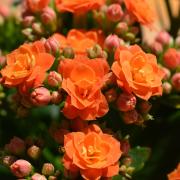When Gardeners’ World presenter Frances Tophill moved to her two-bedroom stone cottage she inherited the biggest garden she had ever owned, at 9m x 10m, with a little lawn, a rose archway, a small pond and a wood store.
There, she has created her own pocket of paradise, but has learned much along the way, as she explains in her new book, A Year In A Small Garden.
Here, she offers tips to anyone who has just moved and is wondering what to do with their new plot of land in the next year.

1. Watch and learn
“The first year, I would just almost be observing what the garden does. The light changes so much from winter to summer, the position of the sun. You learn where there are wet patches and dry patches, windy patches, or there might be bits that never get any rain because a wall gives you a rain shadow.”
2. Try to do the minimum
“See what comes up. In my garden I had daffodils, rhubarb and things that I thought had died or I didn’t think there was anything there and suddenly you have growth shooting from the soil.
“Doing the very minimum is really important, because if you take the time to do that then by the time you put pen to paper to make a little design of what you want your garden to be, you’ll know which bits you can use, where the sun hits, where you want to sit and where you want to store stuff.
“You can also find what your natural pathways are and how you move through the space, and you’ll also learn what you like and what you don’t like.”
In time, you may want to move plants that have emerged but might be in the wrong place.
“I moved a rhubarb from a sunny patch to near the pond. Moving plants is best in autumn or spring, or for a shrub or a tree, when it’s fully dormant.”
3. Keep a diary
“I made notes, kept a diary, maybe because I’m not a particularly organised person. What tends to happen is that you notice the things that matter.
“I noticed, for example, that my garden has a very big wall to the south side, so in the middle of winter I get no sun at all because the low sun is behind that wall all the time. When I moved in February last year I realised I had no sun, but in March the sun hit the corner of the garden and I wrote that down.
“Those detailed observations will help you to work out where to put plants that need sunlight and where you won’t be able to put certain plants.”
4. Take photos
“Definitely take photos because that will jog your memory and you’ll see what was where. See how it’s comparing to what it was before.”
5. Test your soil
“Work out how alkaline or acid the soil is – soil testers are easily available from garden centres. Also look at how wet the soil is. Do a bit of a dig, see how many worms you have, assess the condition of the soil.
“If the soil is very wet in the winter it might be very dry in the summer. A lot of clay soils, for example, store the water in the soil in the winter and then bake solid in the summer.
“If you don’t want the soil to be quite as wet, add organic matter, either compost or manure, once the soil has dried. Never add organic matter to waterlogged soil because it then breaks down and creates lots of anaerobic bacterial conditions which will make it worse.
“Once the soil has dried out a bit, dig in organic matter that will slowly improve the structure of the soil. Adding grit can help but generally that gets sucked into the clay anyway and doesn’t make a huge difference.”

6. Choose suitable plants for your soil
“This is the best thing to do. On permanently wet ground you might grow bog plants like ligularias, filipendula, astilbes and ferns. If you have soil that is wet in the winter and dry in the summer, plant more of the floodplain plants like astrantias and veronicastrums.”
7. Don’t tidy up too much
If your new garden is totally overgrown, full of brambles and weeds, without any semblance of order, don’t clear it too vigorously, Tophill suggests.
“You are going to want to clear, whether you get a brush cutter or just lay down cardboard to suppress some of the weeds and create some beds, or just mow parts through it, which can be a really nice way to give you access. If you must clear, do it with gentleness.”
8. Make friends with the neighbours
“That is really important, especially if you are planning on doing any kind of work. Get to know people first so they know you’re all right. I’ve learned this.”
Indeed, a month after moving in, a BBC camera crew came in to film her garden for Gardeners’ World, and she also had a greenhouse built which takes up about a fifth of her outdoor space. Although she had told neighbours, it took a bit of getting used to.
9. Focus on your own needs
“Work out what you want or need as a couple or a family or if you’re on your own. For a lot of people it’s just a bit of fresh air and maybe a kind of outdoor room that they’re going to use to sit in, but a lot of people want to grow vegetables. Is that going to be what your garden needs?
“Do you need storage, a lawn mower, a lawn, or a low-maintenance spot to chill out after a day of working at a computer?
“Try to distil your own needs from the garden and combine that with your observations. I’d also write that down. What do you want from the garden? What do you need from the garden? You can probably take quite a few of the things off the want list. You might be able to combine some of the two.”
10. Keep it simple
“If you try to fit too much into a small space, it will look smaller and more cluttered.”
A Year In A Small Garden by Frances Tophill is published by BBC Books, priced £26. Available now



























